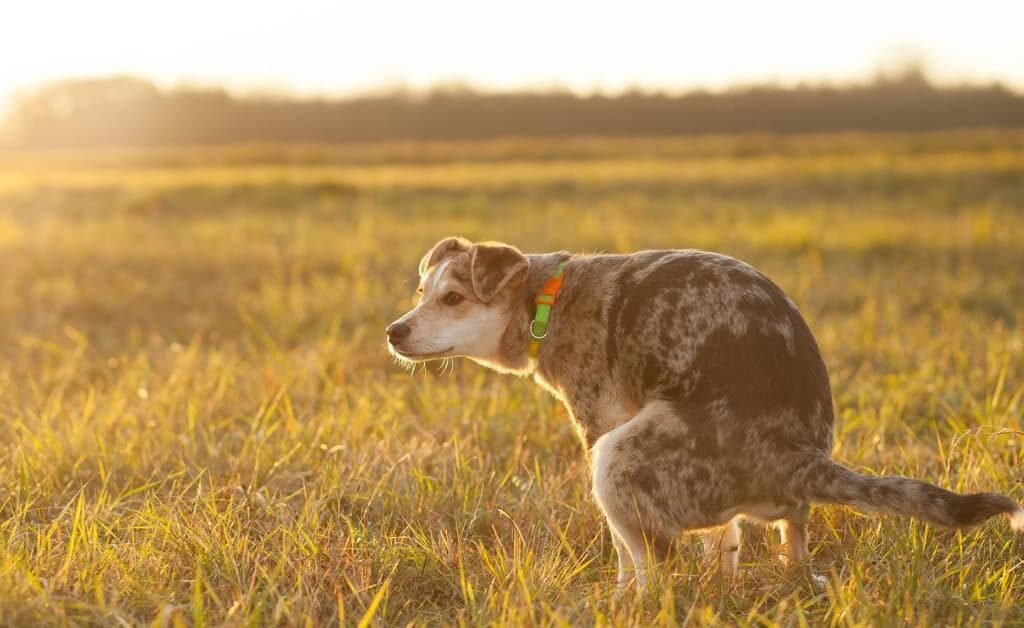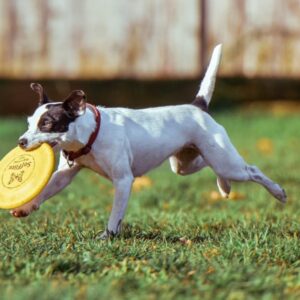
Dog poop in your yard can be a frustrating and unsanitary problem. Not only is it unpleasant to step in, but it can also harm your grass and plants.
Fortunately, there are several methods you can use to prevent dogs from pooping in your backyard.
We will explore six ways to stop dogs pooping in your backyard, including commercial and natural repellents, fencing and barriers, and creating a designated area for your own dog to go.
Short Summary
- Use commercial or eco-friendly repellents, set up barriers, or create a designated “poop zone” to prevent your own dog from pooping in your yard.
- For a neighbor’s dog, consider fencing, planting deterrent plants, or politely speaking to the owner and providing evidence if necessary.
- Avoid using toxic plants like onion and garlic, and consider using signs to discourage dog owners from letting their dogs poop in your yard.
- Experiment with different methods to find what works best for your yard, and remember to stay patient and consistent.
Prevention Methods
Various prevention methods can be employed to deter dogs from relieving themselves in your yard.
Dog training techniques such as setting up barriers or creating a designated poop zone for your dog can be effective in training them to go in designated areas.
Additionally, commercial or eco-friendly dog repellents, fencing, or sprinklers can also be used to keep dogs out of your yard.
These methods are not only effective but also provide a humane way of dealing with the issue.
In addition to these methods, natural repellents such as vinegar, almond oil, lavender, citronella, and scaredy-cat plant can be used to keep dogs away.
These natural repellents are not only safer for the environment but also provide a natural way of keeping dogs out of your yard.
Community solutions such as setting up signs to discourage dog owners from letting their dogs poop in their yard or speaking to the dog’s owner can also be effective in dealing with the issue.
Overall, patience and consistency are key to keeping your yard clean and free from dog poop.
Commercial Repellents
While some may argue that commercial repellents are expensive, they can effectively deter dogs from entering your property and leaving their waste.
These repellents come in different forms, from sprays to granules, and are available in pet stores and online.
The effectiveness of these products varies, and it is crucial to choose a repellent that is specifically designed to deter dogs.
Some products may not work on all dogs, and it may take some trial and error to find the right one for your yard.
It is important to note that while commercial repellents can be effective, they may come with potential side effects.
Some dogs may have an adverse reaction to the ingredients in the repellent, leading to skin irritation or other health issues.
It is essential to read the label carefully and follow the instructions to minimize the risk of harm to pets or humans.
Additionally, some repellents may harm the environment or other animals, and it is crucial to choose an eco-friendly option to minimize the impact on the ecosystem.
Natural Repellents
Natural repellents are an alternative to commercial options for deterring dogs from entering and pooping on your property.
These DIY recipes are often eco-friendly, inexpensive, and easy to make with household ingredients.
However, their effectiveness may vary depending on the dog’s breed, age, and personality.
To help you choose the best natural repellent for your yard, we have created a comparison table with five common ingredients: vinegar, almond oil, lavender, citronella, and the scaredy-cat plant.
Note: The effectiveness of natural repellents may vary depending on factors such as dog breed, age, and personality.
They may need to be reapplied frequently or combined with other methods for optimal results.
Please keep in mind that the information provided in this table is for reference purposes only.
It is important to research and test different repellents to find the best solution for your specific situation.
| Ingredient | Smell | Toxicity | Effectiveness | Tips on Usage |
|---|---|---|---|---|
| Vinegar | Pungent | Low | Moderate | Dilute vinegar with water in a spray bottle. Apply around the perimeter of the yard or on specific areas where dogs tend to poop. Reapply after rain. |
| Almond Oil | Mildly Nutty | Low | Low | Mix almond oil with water and spray it on problem areas. Reapply every few days. |
| Lavender | Floral | Low | Low to Moderate | Plant lavender in your yard or use lavender oil. Refresh plants or reapply oil regularly. |
| Citronella | Citrusy | Moderate | Moderate | Dilute citronella oil with water and spray it around the yard. Reapply every few days or after rain. |
| Scaredy-cat plant | Pungent | Low | Low to Moderate | Plant scaredy-cat plants around your yard. Refresh the plants regularly. |
Fencing and Barriers
One effective method for preventing dogs from entering your property and defecating is the installation of fencing and barriers.
This is a popular solution for those who want to keep their yard clean and prevent dogs from causing damage to their lawn or garden.
Garden design experts recommend using fencing that is at least 4 feet high, made of solid material (such as wood or vinyl), and has a locking gate to prevent dogs from sneaking in.
DIY solutions for fencing and barriers include using chicken wire or mesh to create a temporary barrier around the perimeter of the yard.
Another option is to use landscaping stones or rocks to create a natural barrier that dogs are less likely to jump over.
Lastly, some homeowners have found success using decorative planters or raised garden beds to create a physical barrier that dogs cannot easily pass through.
When considering fencing and barriers, it is important to take into account the size and strength of the dogs that are roaming in your area, as well as any local regulations or HOA guidelines.
Stopping a Neighbor’s Dog
To address the issue of unwanted dog defecation in your yard, it may be necessary to take steps to stop a neighbor’s dog from causing the problem.
According to a survey conducted by the American Veterinary Medical Association, 44% of dog owners report that their pets roam free in their neighborhood.
One way to stop a neighbor’s dog from using your yard as their personal toilet is to use commercial or eco-friendly homemade repellents.
Vinegar, citronella oil, chili powder, and cayenne pepper are all effective repellents that can be used to discourage dogs from entering your yard.
Additionally, fencing your yard in, planting certain prickly plants, and setting up signs can all be effective deterrents.
If these methods do not work, speaking to the dog’s owner may be necessary.
Taking a picture of the culprit can provide evidence to the owner and help to resolve the issue. When speaking to the owner, it is important to be polite and calm.
Additionally, collecting evidence can help to demonstrate that you have tried to address the issue in a reasonable and responsible way.
By working together, it may be possible to find a solution that benefits both parties.
If speaking to the owner does not work, it may be necessary to escalate the issue to local authorities.
However, this should be a last resort and all attempts should be made to resolve the issue between neighbors before involving outside parties.
FAQs:
Are there any homemade repellents that are harmful to dogs?
Some homemade repellents for dogs, such as onion and garlic, can be harmful to their health. It is important to prioritize dog safety when creating homemade repellents and to research the potential effects of ingredients before using them.
Can using a sprinkler system harm dogs or other animals?
Sprinkler safety is important to consider when using them to deter dogs from pooping in your yard. Animal-friendly repellents, such as vinegar or citronella, should also be used to avoid harm to dogs or other animals.
How long does it usually take for a dog to learn to use a designated poo zone?
On average, it takes a dog two to four weeks to learn to use a designated poo zone with consistent positive reinforcement training. Patience is key in teaching dogs new habits.
Is it legal to set up barriers or fences in front yards to prevent dogs from pooping?
Setting up barriers or fences in front yards to prevent dogs from pooping may have legal implications depending on local laws and regulations. Alternative solutions such as using repellents or speaking to dog owners should be considered.
What can be done if the dog owner refuses to take responsibility for their dog’s actions?
When a dog owner refuses to take responsibility for their dog’s actions, legal consequences may be pursued, such as fines or even legal action. Community interventions, such as speaking to the owner or setting up signs, can also be effective.



